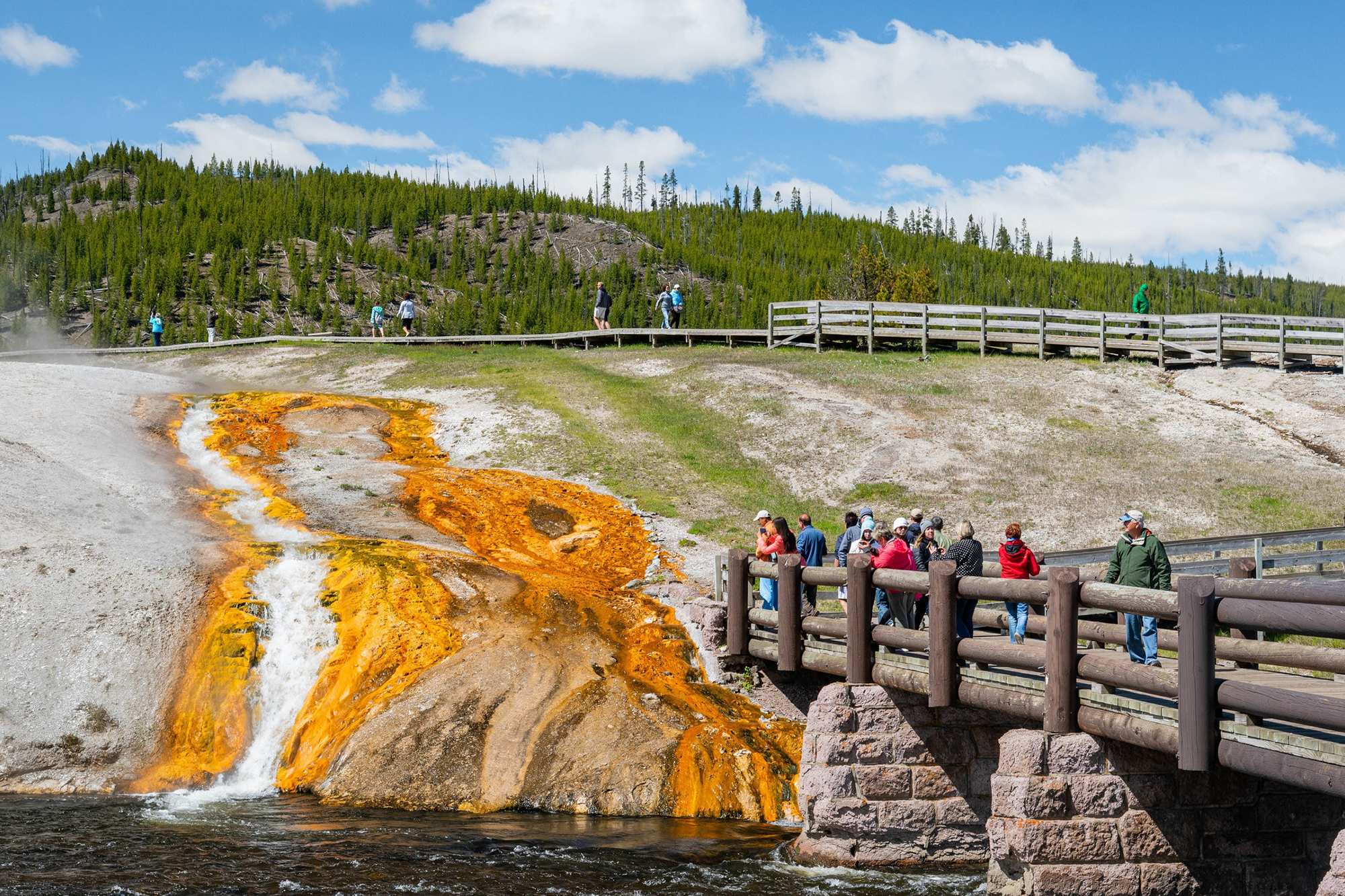
How magma is stored beneath yellowstone
Data from a major deployment of seismometers in 2020 is revealing new insights into the characteristics of the magma chamber beneath Yellowstone caldera, including how melt is distributed in the reservoir.

Over the past few years, several new insights into the character of Yellowstone’s magma reservoir have been published. These results are largely based on seismic data—particularly on the variable speed of seismic waves in the subsurface.
Seismic waves record information about the subsurface structure and composition as they pass through the earth. From the seismic source to receiver, the travel time can be used to determine how fast the wave propagates. Hot or partially melted rock slows down the wave propagation in comparison to solid rock, so seismic waves that move more slowly than expected might indicate the presence of hot or molten material. A single source-to-receiver travel time measurement, however, only provides the average information along the wave path. It is therefore difficult to accurately characterize underground areas that can be extremely variable and complex—for example, beneath a volcano. More data are needed. Just like a digital camera, where more megapixels give you a better image, more seismic data provide better resolution of what the subsurface looks like.

The current seismic network in Yellowstone is maintained by the University of Utah Seismograph Stations and consists of about 40 stations. The network not only detects earthquakes, but also offers important opportunities to probe the structure of the subsurface. Scientists have used seismic wave speeds from earthquakes occurring around Yellowstone and even hundreds of miles away to depict the current magmatic system beneath Yellowstone caldera, which consists of two reservoirs stacked atop one another—one containing viscous rhyolite magma at depths of 5–19 km (about 3–12 mi), and a second holding more fluid basaltic magma at 20–50 km (about 12–30 mi) beneath the surface. Based on seismic wave speeds, the melt fraction in the total reservoir system is less than 10% overall, assuming the liquid phase of the material (melt) is broadly distributed within the solid rock matrix. The upper reservoir contains more melt—perhaps up to 20% based on the most recent estimates—than the lower reservoir, but both are mostly solid. This image, however, provides no information regarding the texture of the reservoir, or how melt might be stored—for example, evenly distributed, all in one place, or in small pods.
The University of Utah, in collaboration with the University of New Mexico and Yellowstone National Park, attempted to address this knowledge gap with a temporary deployment of hundreds of seismic sensors across the region. The field campaign was conducted from August to September 2020, when around 650 autonomous seismic sensors, or “nodes,” were set up along roads and trails. These are the same types of sensors that have been used to study the dynamics of Old Faithful and Steamboat Geysers. The 2020 seismic array was designed to passively record seismic waves generated by the ocean, known as microseisms. Although the energy from microseisms is small, it is detectable by modern seismometers even very far from the coast and has characteristics that make it ideal for studying the crustal structure beneath Yellowstone.
Read the entire article posted by Yellowstone Volcano Observatory.
Yellowstone Caldera Chronicles is a weekly column written by scientists and collaborators of the Yellowstone Volcano Observatory. This week's contribution is from Sin-Mei Wu, seismologist with Lawrence Berkeley National Laboratory, and Jamie Farrell and Fan-Chi Lin, seismologists with the Department of Geology and Geophysics at the University of Utah.